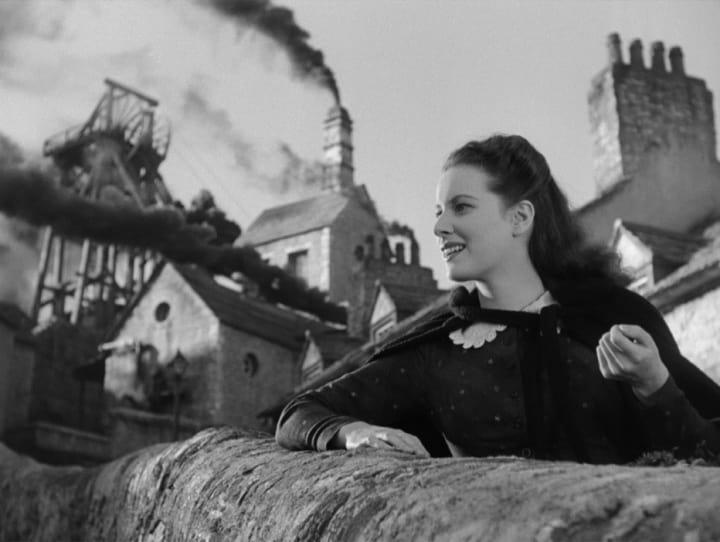
Despite its reputation as the picture that undeservedly beat Citizen Kane for Best Picture and Director Academy Awards, How Green Was My ValleyM remains a stirring and vital portrait of a close-knit community in all its glory—and all its failings.
Seen through the eyes of a boy approaching manhood, it’s the chronicle of a quaint Welsh community and one proud family within it who find their simple lives changing at the turn of the nineteenth century and their little valley growing corrupt from within and without.
Huw Morgan (Roddy McDowell) is the youngest of many brothers, and from his lowly place he watches as his parents’ household rides the tide of the oncoming century. Mining wages decrease and the brothers leave to find work. Huw faces class discrimination at his school in another town. A secret love between a noble pastor and Huw’s older sister is tested. Far from being just a sentimental story, its many vignettes of the Morgan family and the social, political, and religious spheres in which they live meld into a chronicle of nothing less than the death of innocence, both for Huw and for the village itself.
This family’s moments of triumph are well earned and yet they are merely bright spots in a story where everyone, in some sense, loses everything. The very plaintiveness of the title itself is quickly forgotten; how green was my valley, mourns Huw as he looks back on his childhood.
The coal mine, so joyfully introduced to us as a fount of life and purpose, begins swallowing its own and blackening the town. His neighbors, the same ones who serenade his mother after a terrible accident, reveal themselves to be gossips and hypocrites. Even the warm Rev. Gryffud (Walter Pidgeon) throws up his arms in defeat at his inability to truly transform the hearts of his flock.
All of this is shot with Ford’s typically keen eye for striking and efficient compositions. The film’s mastery of the form is evident in every shot, from the stunning, almost apocalyptic wide shots of workers trudging to and from the mine, to the close-ups of McDowell’s pure, honest face. While originally intended to be shot in Technicolor, its rich black and white imagery acts as a counterpoint to the village’s moral gradient, its shades of grey slowly revealed as each vignette unspools.
And yet there is such joy to be to be found in this film: the joy of a family at supper, of a long-sought reunion, of neighbors coming together not just to comfort, but to elevate the spirits of one of their own. It’s a film steeped in a nostalgia that is noble, preservative, and even holy; these are the most cherished memories of Huw and he is passing them on to us to keep and preserve ourselves.
How Green Was My Valley is not just a noble film or a tragic film; it is at its best an honest film. Despite its elements of artifice, or its outdated mannerisms, or the laurels of its contemporaries, it remains one of the great works of the classical Hollywood era that understands the very rhythms of living itself, with all of its struggles and triumphs, in every walk of life.
—N.W. Douglas
- Directed by: John Ford
- Produced by: Darryl F. Zanuck
- Written by: Philip Dunne Richard Llewellyn
- Music by: Alfred Newman
- Cinematography by: Arthur C. Miller
- Editing by: James B. Clark
- Release Date: 1941
- Running Time: 118
- Language: English
Arts & Faith Lists:
2011 Top 100 — #74
2015 Top 25 Films on Memory – #11